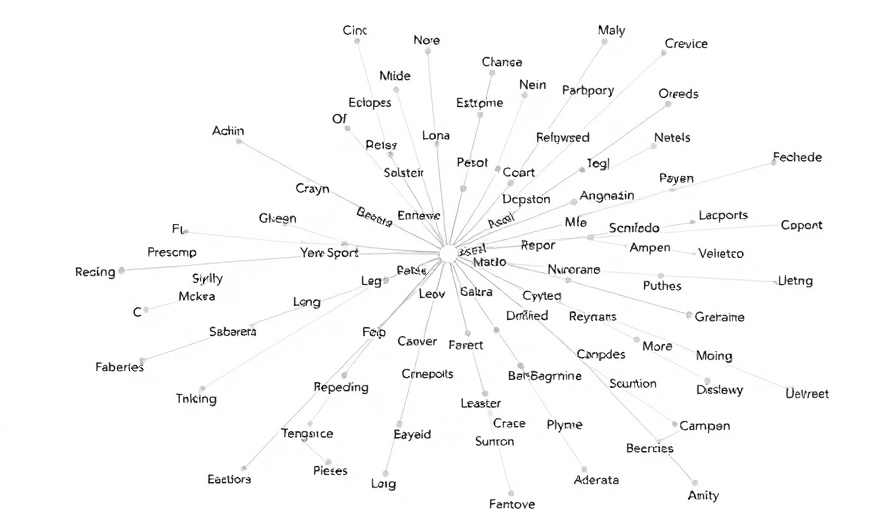
Celanese Sets the Bar High in Agentic AI
As businesses across various sectors strive to harness the power of artificial intelligence (AI), one company demonstrates remarkable leadership in this space: Celanese Corporation. Positioned in the global chemicals industry, Celanese has adopted agentic AI, which differentiates it from its peers. According to a survey by the ARC Advisory Group, while only 10% of industrial companies are prepared to implement AI broadly, Celanese serves as a beacon of innovation.
The Power of Agentic AI
At its core, agentic AI refers to a system of interacting agents, each trained on specific tasks or datasets. These agents are capable of communicating and collaborating to address complex challenges, garnering greater flexibility than traditional monolithic AI systems. Celanese has effectively harnessed agentic AI technologies, especially in the face of industry challenges such as supply chain complexities and safety concerns, to strengthen its manufacturing processes.
Redefining Digital Transformation
Prior to the COVID-19 pandemic, Celanese identified an urgent need for digital transformation as staffing issues and the need for safety arose. By establishing a robust digital infrastructure, the company has been able to support remote operations, detect equipment anomalies, and enhance production optimization. This acknowledgment of digital transformation laid the groundwork for the successful deployment of agentic AI—enabling a more dynamic and responsive manufacturing environment.
Building a Human-Centric Approach
Crucially, Celanese remains committed to ensuring that technology enhances rather than diminishes human involvement in manufacturing operations. Their guiding principle of human-centric design emphasizes that technology should augment the human experience, allowing employees to operate at their maximum potential.
The Role of Knowledge Graphs in Agentic AI
Cognite's data fabric incorporates knowledge graphs—powerful tools that foster relationships between previously siloed data sources. Knowledge graphs enable Celanese to unearth complex relationships and patterns within data, allowing for more informed decision-making. This advancement is particularly important in solving issues such as equipment failures where understanding multiple data inputs is essential.
Welcome to JO.AI: The Co-Pilot for Manufacturing
One of the standout innovations from Celanese is JO.AI, a generative AI-powered user interface designed to facilitate efficient workflows in manufacturing plants. JO.AI serves as a critical touchpoint that integrates data from various sources, allowing personnel to manage operations more effectively. This system has proven beneficial in troubleshooting issues ranging from machinery performance to maintenance schedules, effectively streamlining the operational loop.
Profound Impacts on Operational Efficiency
Celanese has diligently demonstrated that technological integration yields tangible results. For instance, their implementation of JO.AI has facilitated a significant 15% increase in effective preventative maintenance. The strategic deployment of AI within the company's operational framework signals a shift in how industries might leverage technology for better performance.
Future Outlook for Celanese and Agentic AI
As Celanese continues to evolve its agentic AI capabilities, they aim to expand their application across more plants, with projections for increased ROI as the system matures. By focusing on building a cohesive digital foundation, the company is well on its way to optimizing not only its operations but also the safety of its workers and products.
Facing Challenges Ahead in AI Implementation
While Celanese's journey into the realm of agentic AI is commendable, challenges remain. Al Syed has acknowledged the goal to reduce "hallucinations"—instances where an AI model provides inaccurate information—emphasizing the importance of reliability in AI systems. Addressing these challenges will be critical as other companies look to Celanese for inspiration in their own digital transformations.
Conclusion: Embracing the Future with Agentic AI
As we witness a growing trend in AI adoption within various industries, Celanese exemplifies how fostering technological advancement can lead to safer, more efficient, and human-centric manufacturing practices. For AI enthusiasts, understanding how Celanese integrates agentic AI into their operations can provide invaluable insights into future trends. The journey has just begun for not only Celanese but the wider industrial landscape as companies adapt to increasingly digital environments.
As Celanese ventures deeper into the realm of agentic AI, the lessons learned and the technology implemented can serve as a case study for industries across the board. For those with a keen interest in the future of AI, staying abreast of Celanese’s advancements could yield rich insights.
 Add Row
Add Row  Add
Add 




 Add Row
Add Row  Add
Add 

Write A Comment